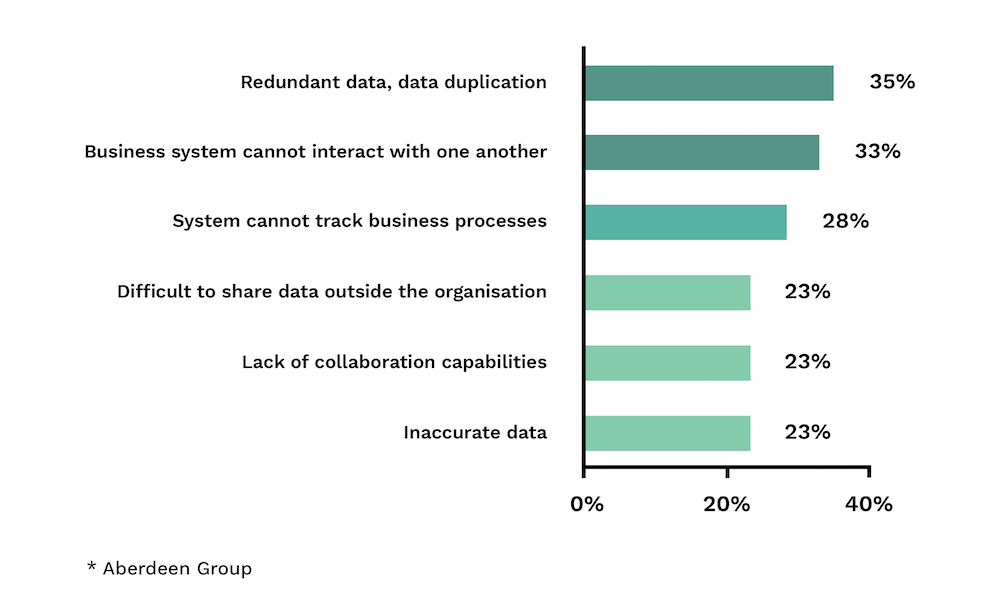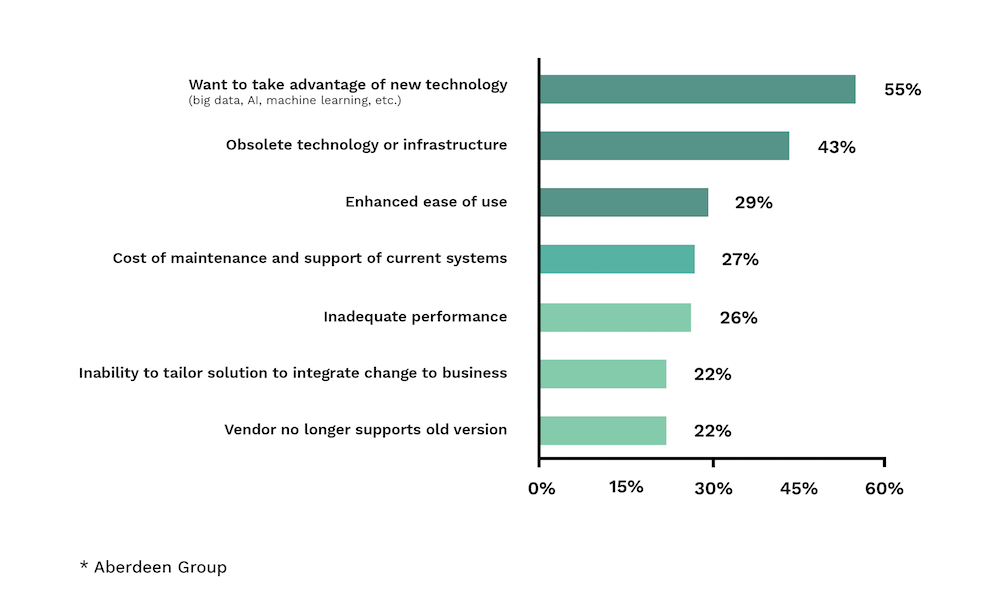The Cost of Doing Nothing: Why You Can't Afford to Delay Digital Transformation?
Whenever considering the need for digital transformation (DX), one of the first questions is how much it's going to cost us? The question we should rather ask is, how much money do we lose every day, week or month that we sit on the decision?
Delaying can have various reasons: we feel our current systems are satisfactory, we have a fear of change or we are just unable to decide between choices.
But not making a decision, is a decision by itself! And that decision is to continue to use antiquated systems or spreadsheets and waste valuable time on day-to-day operations. This will undoubtedly have an effect on our productivity and bottom line.
Most CEO's and decision makers know how important it is to continuously improve their company's efficiency, but they still delay their decision when it comes to greenlighting a DX project. But why?

Reasons for delaying
The arguments for change are not strong enough
Surprisingly, a lot of small, but growing companies think that they are not mature enough to take such a step. Aberdeen Group's research says that 49% of growing enterprises think they are "too small" for an ERP system.
While there is undoubtedly a size, where adopting an ERP system requires more effort than the benefits it brings, this group is constantly shrinking. Nowadays, more and more ERP vendor offer solutions that cater to the specific needs of SMEs.
26% of the respondents said that they were effective in the past, but are planning on using an ERP in the future. More interesting is that 23% think that they won't even need an ERP in the foreseeable future.
These ventures probably don't realize how their current systems and tech stack are severely limiting their growth. This can be deduced from the fact that most of the respondents face some kind of a business challenge in their day-to-day operations:

Another type of organisation is one that already uses some kind of business software, but their business needs have changed and the software didn't keep pace.
Switching an ERP system to another one is a complicated and resource intensive process. Because of this, most decision makers prolong their decisions as long as possible. Unfortunately, they most often don't calculate with the fact that the longer the delay, the higher the costs of change are going to be:
- They collect more and more data, which they'll have to migrate to the new system;
- As technology becomes obsolete, it's going to get increasingly harder to find experts to work with the old systems;
- Business requirements change, and because the old system isn't adaptable, ad-hoc solutions will be required. These solutions will soon become ingrained in the way they work, and unlearning will be a difficult process.
But when does a solution become obsolete and when will it need to be replaced or updated? The research from Aberdeen Group also tells us what makes organisations change:

I would like to mention at this moment in time that the adoption of an ERP system is in no way the same as embarking on a digital transformation journey. Although the implementation of an ERP is often part of a DX project, the latter delves much deeper into the core business functions and company culture. That being said, the reasons for delaying are often the same, which is well illustrated in by the above figures.
They lack the necessary capabilities to take on project
Another reason why mane delay such a project is that they lack the necessary in-house capabilities to replace their current systems.
Such a capability might be the necessary change management, dissecting the business processes and restructuring the IT infrastructure.
One capability that you definitely miss on a DX project is a dedicated project owner. The project owner's sole goals should be to make sure of the success of the project and guarantee uninterrupted day-to-day operations. His or her tasks include assembling the project team, ensuring cross-departmental communication, and assigning and accounting for responsibilities. It's crucial to choose somebody who has direct access to upper management and has full authority over the digital transformation project.
The good news is that none of the above capabilities have to be in-house. You can easily outsource some of these capabilities to consultants or subject matter experts. This also has the added benefit of accessing the years-worth of experience they bring aboard. Experience, that an organisation could otherwise only get by learning from their own mistakes.
Resistance to change
According to Deloitte consultants the number one roadblock to replacing old systems is resistance to change. 82% of respondents said projects fail because of internal resistance from the team.
Our minds are programmed to protect us from sudden changes. Many fear that with digitalization and automation their work is going to become redundant.
Therefore, change management is at the core of every responsible DX project. We need to take into account that some jobs are going to become redundant and come up with a strategy to transform these positions into new roles that create value.
Central to this effort is the retraining of the workforce. Machines are nowadays able to partially or fully perform more and more jobs, so it's worth concentrating on improving soft-skills, which are becoming more and more important than technical skills.
But remember, change management can only be successful if we keep an open line of communication between leadership and employees throughout the project and keep everyone involved informed of every step.
Another reason for resistance to change is comfort. As human beings we're prone to get accustomed to the way we work, whether it is manually entering data or using different software to accomplish a certain goal.
By using these outdated methods, we're wasting precious resources, which could be used more productively and profitably. But why change something that is working?
If you ever face a similar situation, your users need an emotional buy-in. Consider them on-par with every other stakeholder:
- Include them in the decision-making and planning process: make sure to include a representative from every user group in every discussion. Organise stakeholder interviews with them, find out what their pain-points and motivations are.
- Articulate the vision: explain to everyone involve what grand scheme of things is and how they fit into your plans. By increasing their sense of ownership, you can turn them from simple users, into champions of your project, at every level of the organisational structure.
Lack of time
Why digital transformation can save a lot of time in the long run, the initial time investment can be considerable.
Business analysis, organisational development, training, and choosing and implementing IT solutions all take months, if not years. On top of it all, it's not just the initial investment we need to consider, but a continuous effort later on, to keep all the processes and systems competitive.
It's worth noting that because of the time and effort required from everyone involved, some disruption to operations will most likely occur, causing a decrease in income.
In order to mitigate the negative impacts, we have to make sure we create a precise roadmap and agree on the challenges that could arise. Also consider involving subject matter experts with relevant industry specific experience.
High costs
Investing in digital transformation will undoubtedly be a major outlay in the life of any organisation. Hearing about the initial investment alone can be enough for some decision makers to push the PAUSE button.
Sometimes this scenario is more fortunate than actually proceeding at this stage, without considering all the other costs involved as well. A DX project cannot be judged based on initial costs alone, as it should be by definition a continuous effort. Training programmes, organisational development, and the maintenance of the IT infrastructure are just some of the recurring costs.
The best plan of action is to create a cost-benefit analysis before jumping head first into a project of this magnitude. Define the areas where you can achieve the highest increase in efficiency and concentrate on these areas alone. Resist the temptation to splash out on "vanity features".
For others, the main point of concern is the hardship of calculating the ROI of such a project. When buying a new production line one can exactly calculate the return on investment based on the increased productivity and higher daily output of products.
A DX project is much more abstract and as such, ROI is harder to calculate. One of the reasons for this is that qualitative ROI is often more important than quantitative ROI. Let me explain:
When talking about digital transformation, it's important to distinguish between two different types of ROI:
- Qualitative ROI: these elements are incredibly hard or impossible to quantify. Most of them are the effect of an established digital culture, like the emotional buy-in of users or a company's ability to innovate and disrupt.
- Quantitative ROI: these are easily quantifiable elements, such as the size of the investment, number of man hours saved through automation, reduction of waste or higher percentage of returning buyers because of increased customer satisfaction.
But how can we calculate the actual cost of doing nothing?
The cost of doing nothing
The cost of doing nothing can actually be calculated as the difference of 2 factors.
The first thing we need to consider is the ROI of the new systems, which we already mentioned before. Thankfully, there is a formula to calculate ROI:

TCO stands for total cost of ownership, which is basically the total cost of the DX project, including all the expected costs incurred during the lifetime of the project. This involves the time invested by the team, consultancy fees, training programmes and the cost of implementation of different systems.
It's crucial to not only include upfront costs, but also recurring costs such as the maintenance and support of IT systems.
Gains are somewhat harder to quantify. We can take into account the amount of man hours saved through automation, increased production capacity, elimination of waste or increased sales.
Let's take another look at the aforementioned report by the Aberdeen Group. Those companies, which invested in their ERP systems performed better than those who did not, on several criteria: lower days sales outstanding (DSO), on-time delivery, inventory accuracy and customer satisfaction. Thanks to better access to information, they were also able to make better informed decisions.

Time for some math!
Let's assume the total gains we expect to achieve through digital transformation is $500k. If the TCO projected for a single year is $200k, we're going to achieve a ROI of 1.5x, meaning we save 1.5 times the amount we invested in a year.
Naturally, because the initial outlays are usually larger, if we don't project the TCO for a single year, we will only achieve positive ROI after 1 or 2 years. Regardless, this will even itself out in later years.
ROI can also be represented in dollar value instead if we omit the denominator: Gains - TCOnew. This computes to a value of $300k, which is the amount of savings left on our bank account, compared to if we did nothing.
Another thing to consider is the yearly upkeep costs of the current systems. How many resources do we need to keep these systems going? We should also factor in the amount of technical debt we accumulate over a year or how much data we collect in a year, which we will have to migrate to new systems later on.
Based on the ROI and upkeep costs of current systems, we can calculate the:

Let's look at our example above. Let's suppose the upkeep costs of our current systems are $50k yearly. Adding the ROI to this amount results in the total dollar value of delaying digital transformation: $350k yearly.
Key takeaways
- Doing nothing may seem like a safe move for any number of reasons, it will take us further away from our goals.
- Although a DX project can be judged based on investment alone, it's also important to consider qualitative ROI as well: how much influence can a digital culture bring to the way we work and how invested is our team going to be?
- Always plan for the future: our new systems should always cater to the business needs we have today, as well as those in 5 years.
- Choosing the right partners to assist us on the digital transformation journey can prove invaluable. With dozens of similar projects behind their back, they can contribute vast experience and knowledge to our project, which we could only gain by constantly trying and learning from our mistakes.
